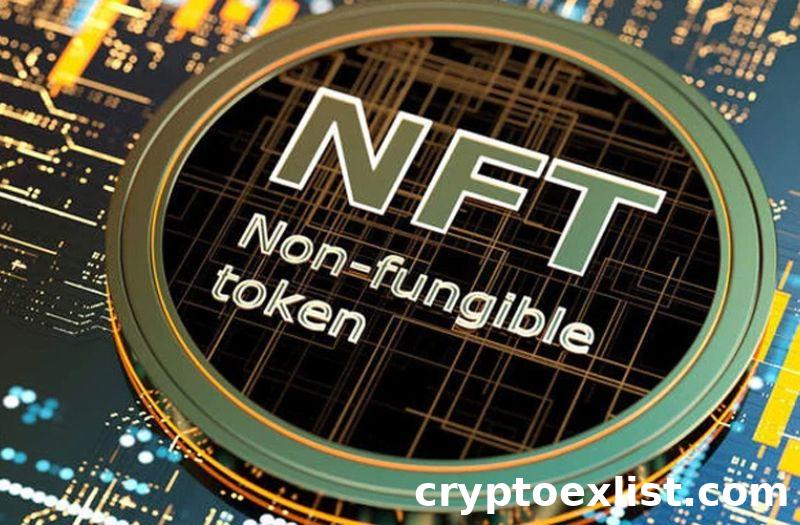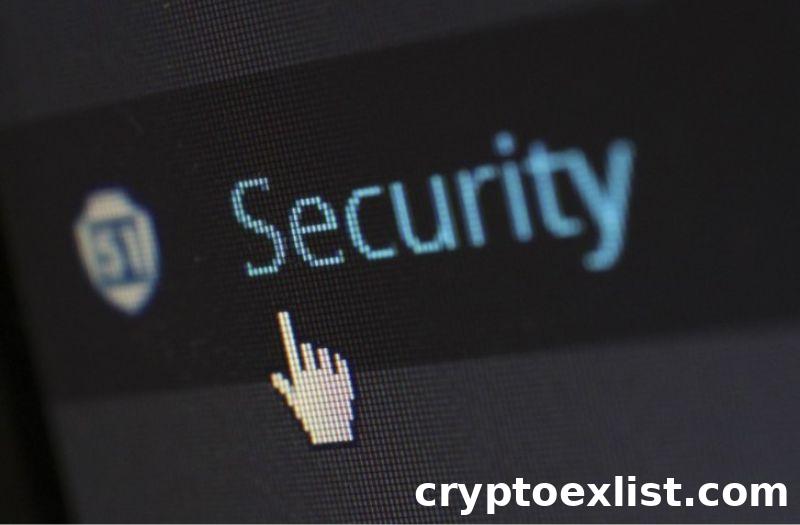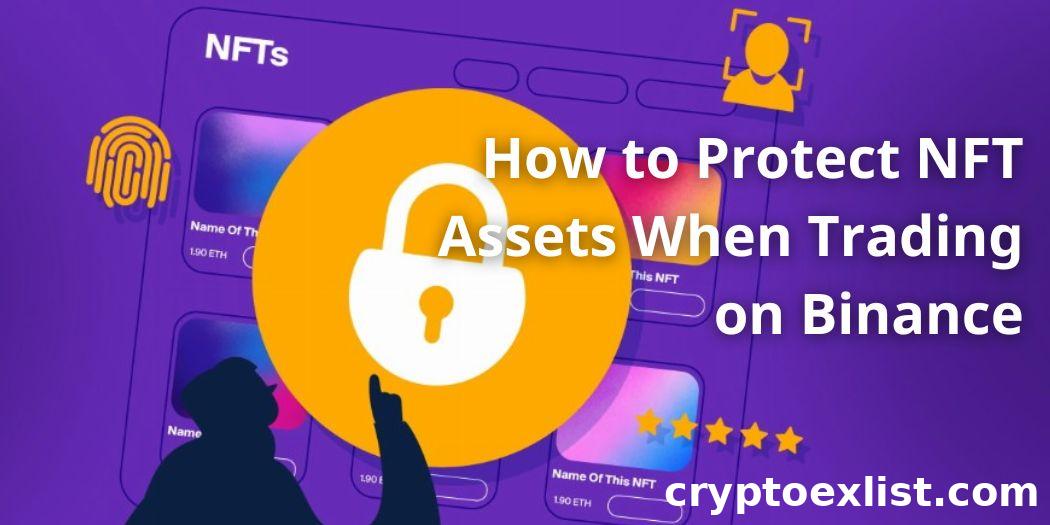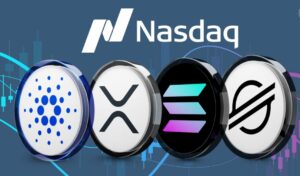
Protecting your NFT assets on Binance is essential for securing your digital investments. By using secure wallets, enabling two-factor authentication (2FA), and being cautious of phishing scams, you can minimize risks while trading NFTs. Additionally, verifying the authenticity of NFT listings and using Binance’s built-in security features will help safeguard your assets. Staying informed about emerging threats and following best practices will ensure a safer and more successful experience in the NFT marketplace.
Understanding NFTs and Their Value
What are NFTs?
NFTs, or Non-Fungible Tokens, are unique digital assets that represent ownership or proof of authenticity for a specific item or piece of content. Unlike cryptocurrencies such as Bitcoin or Ethereum, which are fungible and identical, each NFT is one-of-a-kind and cannot be exchanged on a one-to-one basis. These digital tokens are built on blockchain technology, ensuring that ownership records are secure, transparent, and tamper-proof. NFTs can take various forms, including digital art, music, videos, in-game assets, virtual real estate, and even tweets, making them versatile in the realm of digital ownership. For newcomers, understanding that NFTs are essentially digital collectibles with unique attributes can help you better appreciate their value and how they differ from traditional cryptocurrencies.
The Role of NFTs in Digital Art and Collectibles
NFTs have revolutionized the world of digital art and collectibles, allowing artists, musicians, and creators to monetize their work in ways never seen before. By using NFTs, digital content can be sold as limited-edition pieces or one-of-a-kind items, providing a new layer of scarcity and value that was previously hard to achieve in the digital realm. For collectors, owning an NFT is akin to possessing a signed, original painting or a rare baseball card, but in a digital format. This ownership can include unlockable content, such as exclusive behind-the-scenes footage, bonus tracks, or access to private events, enhancing the collector’s experience.
Additionally, NFTs are used in gaming, sports memorabilia, and virtual worlds, where they represent in-game items, player cards, or virtual land. This utility adds to the appeal and functionality of NFTs, making them not only collectibles but also assets that can be utilized in various digital ecosystems. As the popularity of NFT-based art and collectibles continues to grow, the demand for these unique digital assets is driving new investment opportunities and reshaping the way people view digital ownership.
Factors Influencing the Value of NFTs
Several factors contribute to the value of an NFT, with scarcity, creator reputation, utility, and market demand being some of the most significant elements. Scarcity refers to how rare or limited the NFT is; an NFT that belongs to a limited-edition series or is a one-of-one is likely to hold higher value due to its rarity. The reputation of the creator also plays a crucial role, as NFTs produced by well-known artists, musicians, or influencers tend to fetch higher prices in the marketplace. This is because collectors often place a premium on authenticity and creator credibility.
Moreover, the utility of the NFT can significantly impact its worth. NFTs that provide additional benefits or functions, such as access to exclusive events, game advantages, or the ability to generate passive income, are often more valuable. Lastly, market demand and the overall sentiment in the NFT space can cause prices to fluctuate rapidly. The buzz around certain projects, celebrity endorsements, or media coverage can lead to spikes in demand, driving up prices. Understanding these factors can help newcomers make informed decisions when buying or selling NFTs, especially on platforms like Binance NFT Marketplace.

Importance of Security in NFT Trading
Risks Associated with NFT Trading
NFT trading offers exciting opportunities for collectors, investors, and creators, but it also comes with inherent risks that newcomers need to be aware of. The NFT market is relatively new, which means it can be subject to high volatility and rapid price changes. Additionally, because NFTs are digital assets based on blockchain technology, they can be susceptible to cyberattacks, phishing scams, and fraudulent schemes. For example, a hacker could try to trick users into clicking on malicious links or sharing private wallet information, leading to the theft of valuable NFTs. Another potential risk is the existence of counterfeit NFTs, where digital assets are illegally copied or misrepresented as original works.
To minimize these risks, NFT traders need to conduct thorough research on the marketplaces and projects they engage with. Platforms like Binance NFT Marketplace have regulations and safeguards in place to help protect users, but individual caution is still necessary. Avoiding unverified third-party websites, double-checking smart contract addresses, and staying informed about the latest security threats can go a long way in preventing losses in the NFT space.
Why Protecting Your NFT Assets Matters
The importance of protecting your NFT assets cannot be overstated, as these digital items often hold significant financial and sentimental value. For many, NFTs represent personal investments, digital art collections, or in-game assets that are not only valuable but also irreplaceable. Unlike traditional assets, where there may be ways to recover lost or stolen property, the decentralized nature of blockchain technology means that lost or compromised NFTs are unlikely to be recovered once they are transferred out of your wallet. This makes securing your NFTs a priority for any trader or collector.
Protecting your NFT assets involves a combination of best practices and using reliable tools. This includes setting up strong passwords, enabling Two-Factor Authentication (2FA) on your trading platforms, and using hardware wallets for offline storage of your most valuable assets. Additionally, withdrawing NFTs to secure wallets instead of keeping them on exchanges can add an extra layer of security. With platforms like Binance providing robust security features, NFT traders have the necessary tools to safeguard their investments, but they must still remain vigilant and proactive about protecting their digital assets. By prioritizing security, you can trade NFTs with greater confidence, knowing that your valuable digital items are well-protected.

Setting Up a Secure Wallet for NFTs
Types of Crypto Wallets
When it comes to storing NFTs securely, choosing the right type of crypto wallet is essential. There are primarily two types of wallets: hot wallets and cold wallets. Hot wallets are connected to the internet and include software wallets, such as browser-based extensions or mobile apps, that allow easy access to your NFTs and cryptocurrency. These wallets offer convenience for frequent trading or interactions with NFT marketplaces like Binance NFT Marketplace, but they may be more vulnerable to hacks and phishing attempts due to their online connectivity.
On the other hand, cold wallets, often referred to as hardware wallets, are offline storage devices that keep your private keys and digital assets disconnected from the internet. They provide a higher level of security because they are less susceptible to cyberattacks, making them ideal for storing high-value NFTs or long-term investments. Paper wallets, another type of cold wallet, are less common but involve printing out private keys and wallet addresses, though they may not be as practical for frequent NFT trading.
Choosing the Right Wallet for NFT Storage
Choosing the right wallet for your NFT storage depends on your needs, trading frequency, and level of security you require. If you are a beginner or engage in frequent NFT trading, using a hot wallet like Trust Wallet or MetaMask may be more convenient because of its user-friendly interface and easy integration with NFT marketplaces. However, if you are holding onto valuable NFTs for the long term, investing in a hardware wallet like Ledger Nano or Trezor is highly recommended for enhanced security. These wallets store your private keys offline, making it nearly impossible for hackers to gain access to your assets remotely.
For those who prefer a balance between convenience and security, consider using a combination of hot and cold wallets. You can store smaller amounts or frequently traded NFTs in a hot wallet, while keeping your most valuable assets in a cold wallet for added protection. This strategy allows you to manage your digital assets efficiently while ensuring that your most valuable NFTs are kept secure.
Best Practices for Wallet Security
To ensure your crypto wallet remains secure, follow best practices for wallet security. Start by setting up a strong, unique password for your wallet account and enable Two-Factor Authentication (2FA) to add an extra layer of protection. Avoid sharing your private keys or seed phrases with anyone, as these are the keys to accessing your digital assets. Store your seed phrase in a secure, offline location and never save it in cloud storage or on your mobile device.
Another crucial tip is to keep your wallet software or hardware firmware up to date. Regular updates often contain security patches that protect against new threats. If you’re using a hardware wallet, ensure that you buy it directly from the manufacturer or a trusted reseller to avoid counterfeit devices. Finally, always verify the authenticity of wallet apps or browser extensions before downloading them, as there have been cases of malicious clones designed to steal your assets.
Authenticating Your Account on Binance
Setting Up Two-Factor Authentication (2FA)
When it comes to securing your Binance account, setting up Two-Factor Authentication (2FA) is one of the most effective steps you can take. 2FA adds an extra layer of security by requiring not just your password but also a second form of verification, such as a code generated by an authentication app (like Google Authenticator) or a text message. This means that even if someone obtains your password, they still won’t be able to access your account without the second verification step. To enable 2FA on Binance, navigate to your account settings, choose the Security section, and follow the prompts to set up either SMS authentication or app-based authentication. Using app-based authentication is generally considered more secure than SMS because it is less vulnerable to SIM-swapping attacks.
By enabling 2FA, you significantly reduce the risk of unauthorized access to your account, especially if you are trading valuable assets or handling sensitive information. Make sure to store your backup codes in a safe place in case you need to recover your 2FA settings. This precaution helps ensure that you can regain access to your account even if you lose your phone or uninstall the authentication app.
Verifying Your Identity
Identity verification (KYC) is a crucial step for enhancing the security of your Binance account and gaining access to certain features. By verifying your identity, you provide proof of your personal information, such as name, address, and government-issued ID. This process not only helps protect your account from fraudulent activities but also complies with regulatory requirements in many regions. Completing the KYC process on Binance involves uploading a photo of your ID and taking a selfie for facial recognition verification. This ensures that the account truly belongs to you and that you can withdraw funds and participate in higher trading limits.
The verification process is usually quick and straightforward, and once approved, you gain increased account functionality, including higher deposit and withdrawal limits. Verifying your identity also adds an extra layer of trust and legitimacy to your account, reassuring both you and any other users you interact with on the platform. It’s a necessary step for anyone serious about trading on Binance or using services like the Binance Card and NFT Marketplace.
Keeping Your Login Credentials Safe
The security of your Binance account starts with protecting your login credentials. Always use a strong and unique password that includes a combination of letters, numbers, and special characters to make it harder for hackers to guess. Avoid reusing passwords from other sites, as a breach on one platform could compromise your Binance account. Additionally, never share your login information with anyone, including customer support representatives. Binance staff will never ask for your password, so be cautious if someone requests it.
To further protect your credentials, consider using a password manager to store your passwords securely and avoid logging in from public computers or shared networks, which may be vulnerable to malware or phishing attacks. It’s also a good idea to regularly update your password and monitor your account for any suspicious activity. By taking these precautions, you can keep your Binance account secure and trade with confidence on the platform.
Best Practices for Buying and Selling NFTs
Researching NFT Projects Before Investing
Before diving into buying and selling NFTs, it’s essential to research NFT projects thoroughly to ensure you make informed investment decisions. Not all NFTs hold the same value, and some projects may be more credible and potentially more profitable than others. Start by examining the project’s background, including the team behind it, the community involvement, and any notable partnerships or endorsements. Look for transparent roadmaps and clear utility for the NFT, such as access to exclusive content, in-game items, or memberships. Also, review the project’s social media presence and community engagement on platforms like Discord, Twitter, and Telegram, as strong community support often indicates growing interest and potential demand.
Additionally, read the whitepaper or any available documentation about the project’s goals, technology, and future plans. This will help you understand whether the project aligns with long-term growth potential or if it’s simply riding a temporary hype wave. By taking the time to research and verify details, you can reduce the risk of falling into pump-and-dump schemes or investing in low-quality NFTs, and improve your chances of buying assets with real potential for growth.
Utilizing Limit Orders for Safer Trading
When buying or selling NFTs on platforms like Binance NFT Marketplace, utilizing limit orders can help you trade more safely and effectively. A limit order allows you to set a specific price at which you want to buy or sell an NFT, ensuring that you don’t pay more than you’re willing to or sell for less than your desired amount. This is particularly useful in a volatile market, where prices can change rapidly within a short period. Limit orders give you more control over your transactions, protecting you from unexpected price fluctuations that could otherwise impact your investment.
For sellers, setting a sell limit order can help ensure you achieve a favorable profit margin, while buyers can avoid overpaying by waiting for the price to reach a reasonable level. If you’re new to NFT trading, incorporating limit orders into your trading strategy can help you manage risks more effectively and make the experience less stressful, especially during times of high market activity.
Understanding Market Trends and Timing
In the world of NFT trading, timing can significantly impact the profitability of your investments. It’s crucial to understand market trends and learn how to time your purchases and sales to maximize returns. One way to stay informed is by monitoring news about the NFT market, including upcoming drops, celebrity endorsements, and changes in platform policies. Often, news events can cause spikes or drops in NFT prices, creating opportunities for strategic buying or selling. For example, buying during a market dip when prices are lower can help you acquire valuable NFTs at a discount, while selling during periods of high demand can yield higher profits.

Monitoring Market Trends and Prices
Tools for Tracking NFT Prices
When it comes to monitoring NFT market trends and prices, having the right tools can make a significant difference in making informed trading decisions. Several platforms offer real-time price tracking and market data specifically for NFTs, helping you stay on top of the latest price fluctuations and project performance. Popular tools like DappRadar, NonFungible.com, and CryptoSlam provide valuable insights into top-selling collections, trading volumes, and historical data, allowing you to evaluate which projects are gaining traction and identify potential investment opportunities. Additionally, platforms like Binance NFT Marketplace have built-in features for tracking price trends of NFTs listed on their site, making it easier to keep up with the market dynamics.
Using these tools enables you to set alerts for significant price changes or specific market events, ensuring you never miss an opportunity to buy or sell at an optimal time. The more you familiarize yourself with these tools, the better equipped you will be to make strategic decisions in the evolving world of NFTs.
Analyzing Market Conditions
Understanding market conditions is key to knowing when to buy, hold, or sell NFTs. By analyzing factors such as trading volume, floor price movements, and market sentiment, you can gain insights into the current state of the NFT market. For example, an increase in trading volume for a particular collection may signal rising interest, while a sudden drop could indicate a decline in demand. Pay attention to the floor price, which represents the lowest price for an NFT within a specific collection, as fluctuations in the floor price can reveal market trends and shifts in investor confidence.
In addition to tracking these metrics, consider monitoring broader market indicators, such as cryptocurrency price movements, since the NFT market is often influenced by changes in the overall crypto landscape. For instance, a significant surge in Ethereum’s price may lead to a temporary slowdown in NFT sales, as investors may choose to hold onto their ETH rather than spending it on NFTs. Being aware of these dynamics allows you to adjust your trading strategies accordingly.
Recognizing Scams and Fraudulent Listings
As the popularity of NFTs continues to grow, so does the number of scams and fraudulent listings in the market. It is crucial to be vigilant and recognize warning signs that could indicate a potential scam. Always verify the authenticity of an NFT project by checking whether it is listed on a reputable marketplace, such as Binance NFT, and ensure that it has a verified badge. Look into the creator’s background and track record, as well as the project’s official social media channels, to confirm its legitimacy.
Conclusion
Protecting your NFT assets is a top priority for anyone trading on Binance. By understanding the fundamentals of NFTs, choosing the right wallet, and implementing security measures like two-factor authentication, you can significantly reduce the risks associated with trading digital assets. Staying informed about market trends and practicing smart trading techniques, such as researching projects and using limit orders, further enhances your ability to make profitable and secure investment decisions. With these strategies in place, you can confidently explore the Binance NFT marketplace, knowing your assets are well-protected and your trading approach is built for long-term success.























